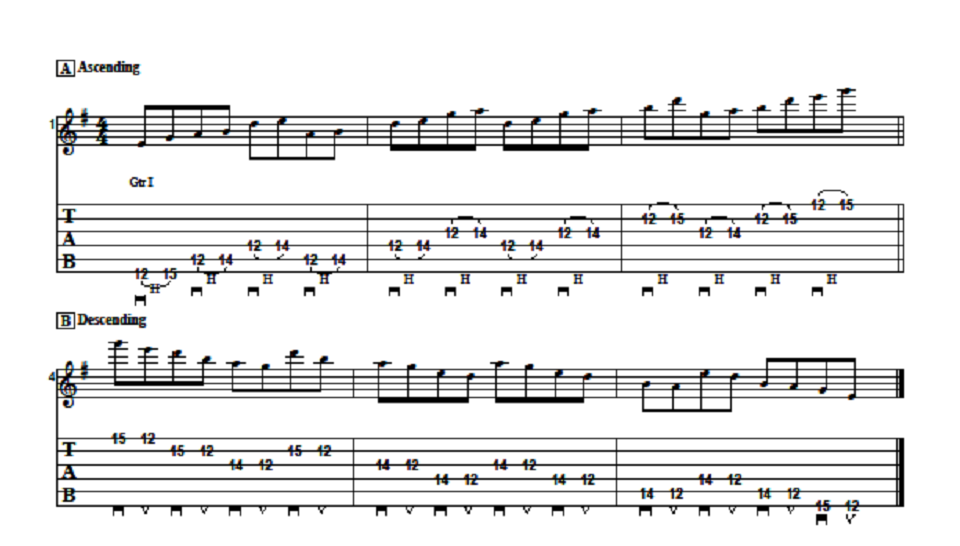Hey, guys. It’s Claude and today I want to talk about
transitioning between chords using single notes.
Now, there are a lot of different ways we can do this.
I’m going to talk about four different ways over these
next couple of videos. This video, we’re just going to
focus on one technique, which is called bass note runs.
In other words, using low notes or bass notes, in between
our chords to kind of connect them together.
So let me give you a couple of examples of some bass note
runs in some famous songs and then I’ll talk about how
you can come up with your own riffs. So here’s an example.
So that’s from Neil Young and it’s just, instead of the
A minor or A minor to D, we’re really going A, walking up
that bass line to the D and then back to the A. So notice
how we’re hitting those group notes of the chord.
Here’s another example. That’s from C. Miller.
Again, we’re using like the G chord but we’re
starting on the G bass note, walking it up to
the next chord, which is the C.
So there are a couple principles here.
First of all, when I say we’re walking it up,
like in that first example, we’re staying within
the scale. It helps to know a little bit of music
theory and you want to kind of stay in that major
scale. By the way, if you’re not familiar with the
major scale or you want to learn more of these
example songs, you can check-out my beginner
course called “Ultimate Beginner Guitar”. It’s got
a lot of great songs, so check that out. So we’ll
plug it for the day. Anyway, using the — staying
within the scale, that’s one principle.
Another one is that, you know, this is really more
of a melody with low notes than a bass line, per se.
What I mean by that is these riffs are a really
strong melody. You can hum that. Same thing with
this one, very strong melody. When you’re writing
your own melodies you want to keep that in mind.
Also, this is kind of obvious, but we’re hitting the
root of the chord on the B where it falls. Again, with
this one, G. The chord progression is G, C, D, C.
Notice how we’re hitting those notes. G, C, D, C. Okay?
Let’s take our own progression. Here’s one that I like.
It’s G, A minor, C, D. So what I recommend you do is
write the bass line or the low melody first and then
add it with the chords. Here’s one that I came up with.
Again, if I’m really in the key of G I want to use
those notes from G major. I’m going like this, G, B, G.
That B is in the scale. Then I hit the A, which is our
next chord. Even though it’s A minor we still hit the
A on the bass. And there we’re really using that
walking-up kind of movement. A, B, C and then C, E, C, D.
And all these notes are, again, within this scale.
Now, it’s interesting when I go from the A minor to the C.
It’s got enough space to walk up. There’s three notes there:
A, B, C. Notice between the G and the C I don’t have that
many notes. There’s only a G and an A, so that’s why I do
something different; I go up to the B. Again, from the C
to that D I have to kind of go in a different direction.
Now, you could do something like chromatic, like…
You can always do that. You don’t have to stay inside
the scale. These are just guidelines, not strict rules.
Anyway, once I have this down, I can combine it with
the strumming.
All right, I hope you enjoyed this lesson. Play around
with this technique and I’ll be back next time for more
techniques on how to transition between chords. Until then,
stay cool, stay groovy and rock on.
